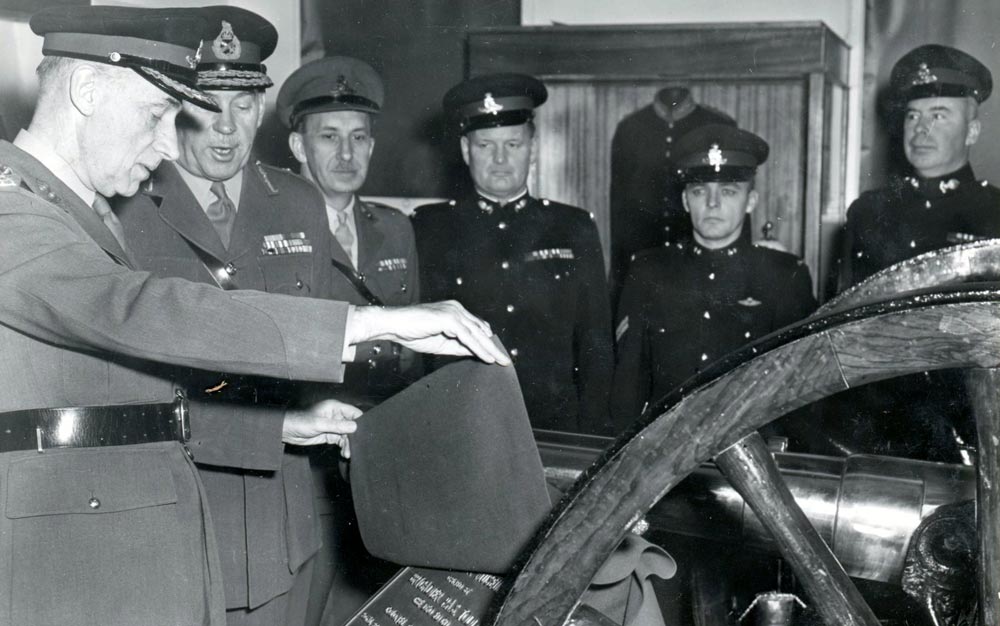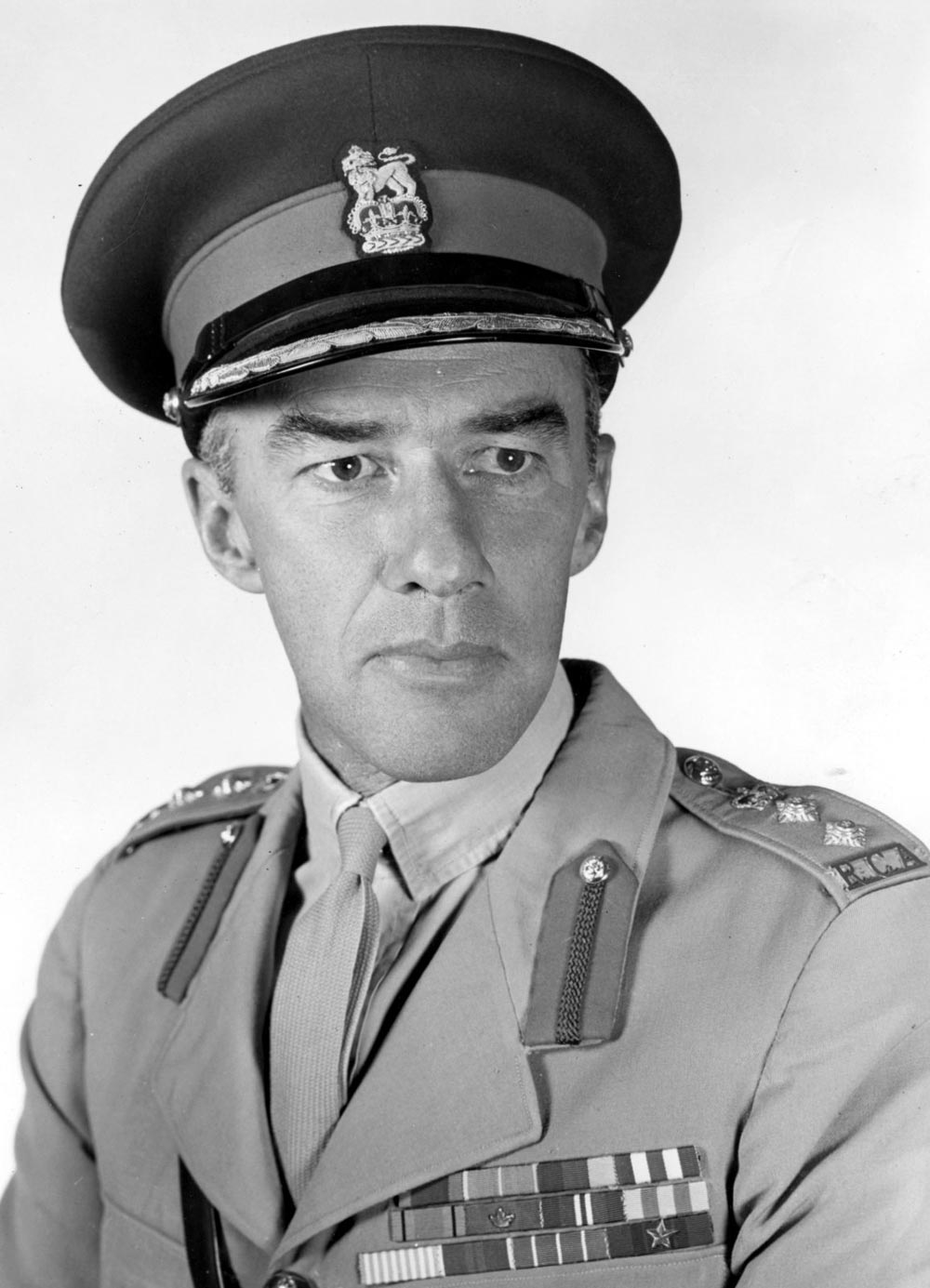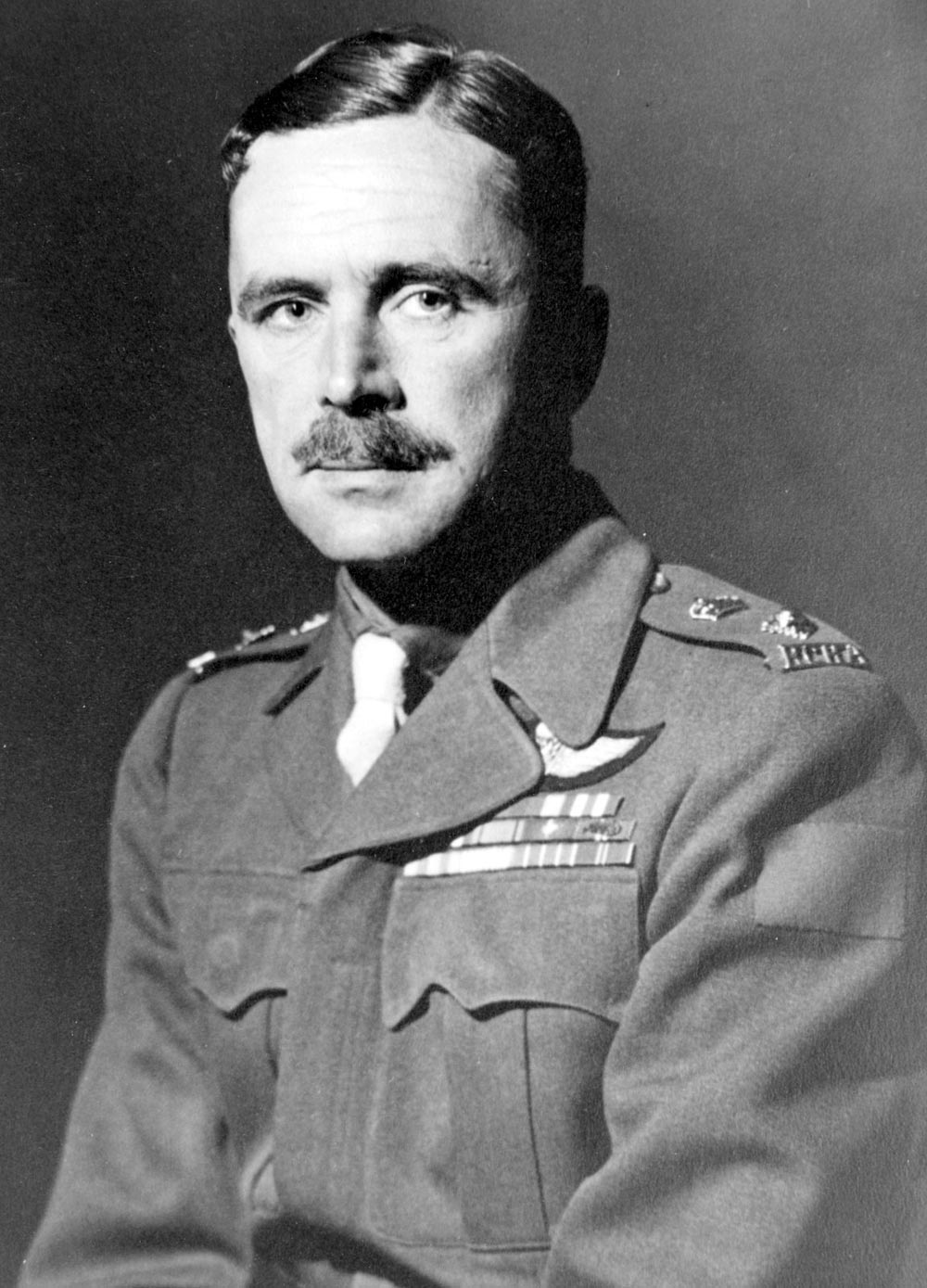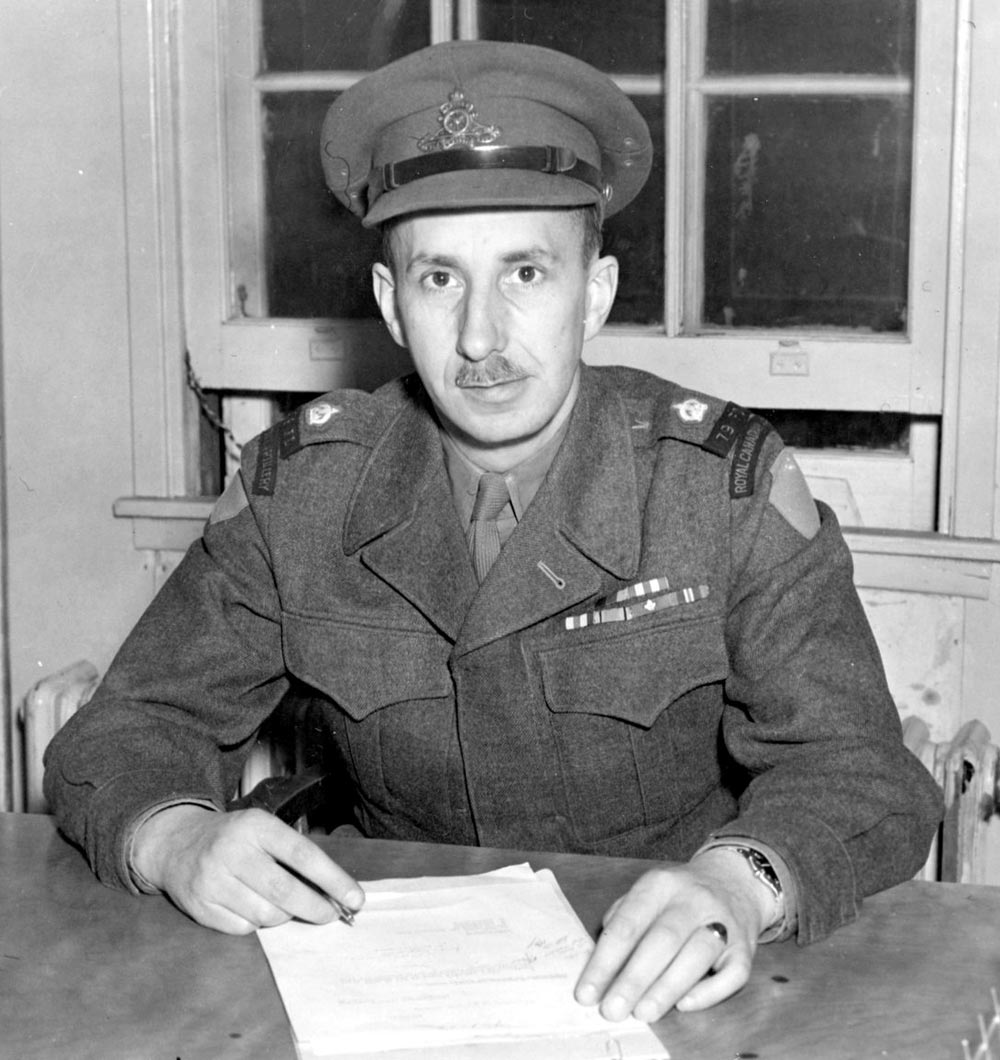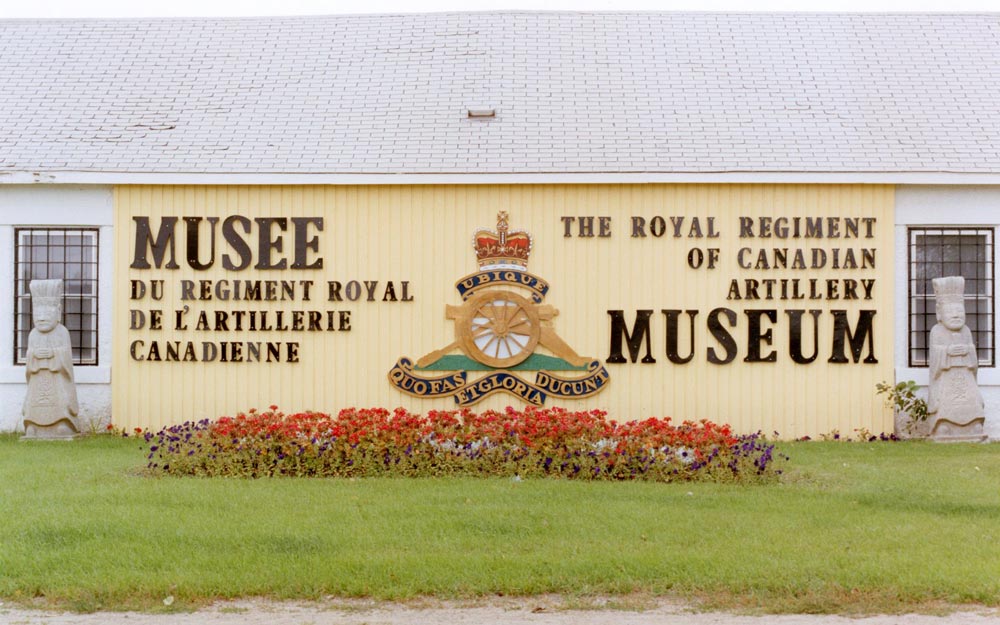
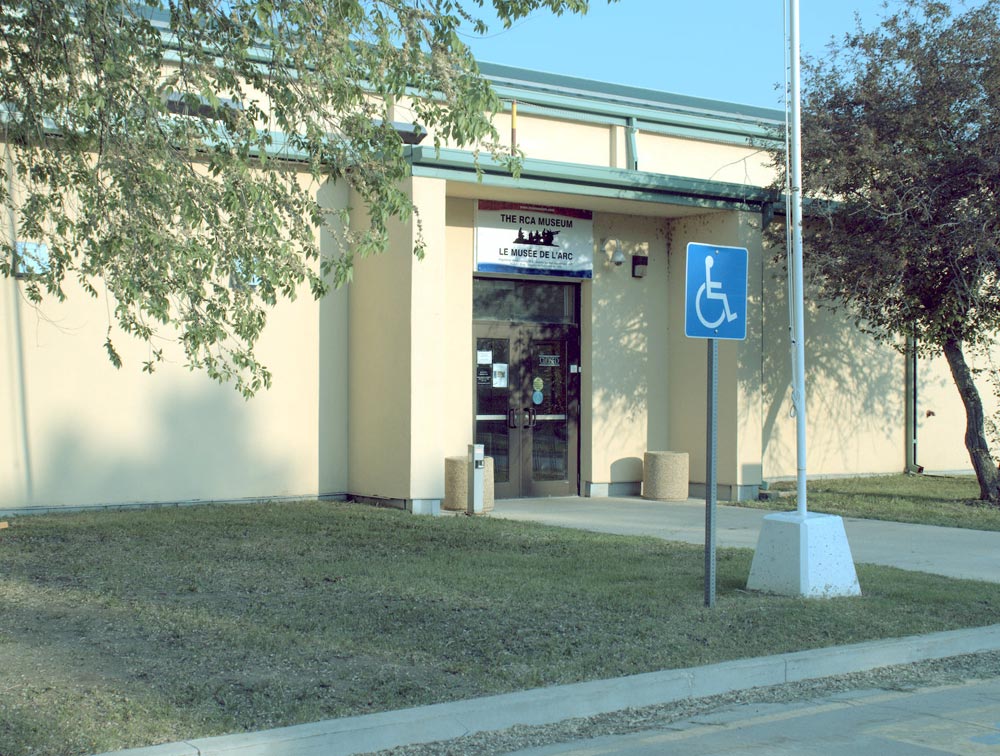
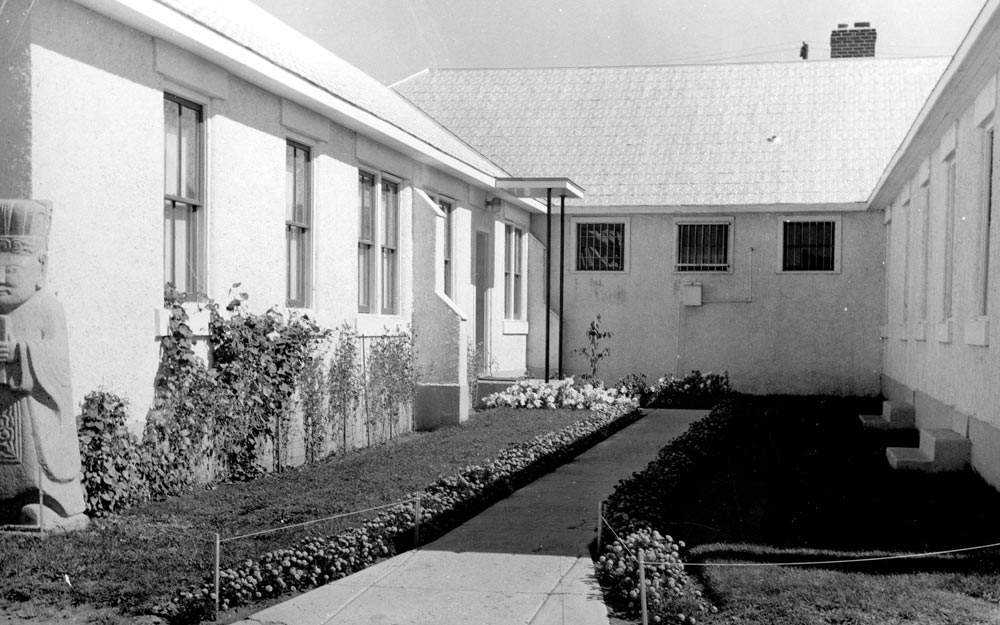
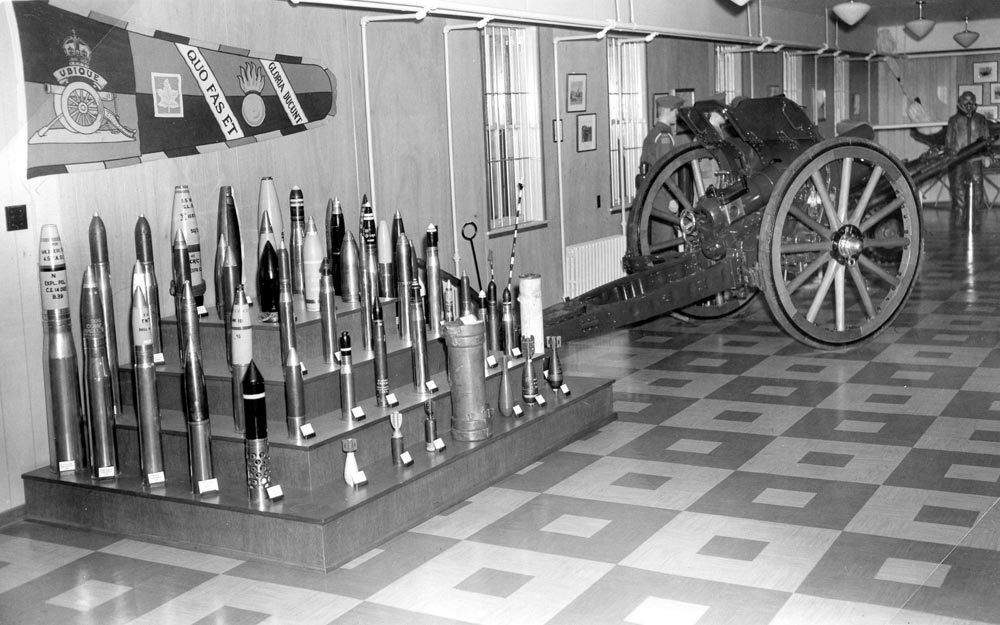
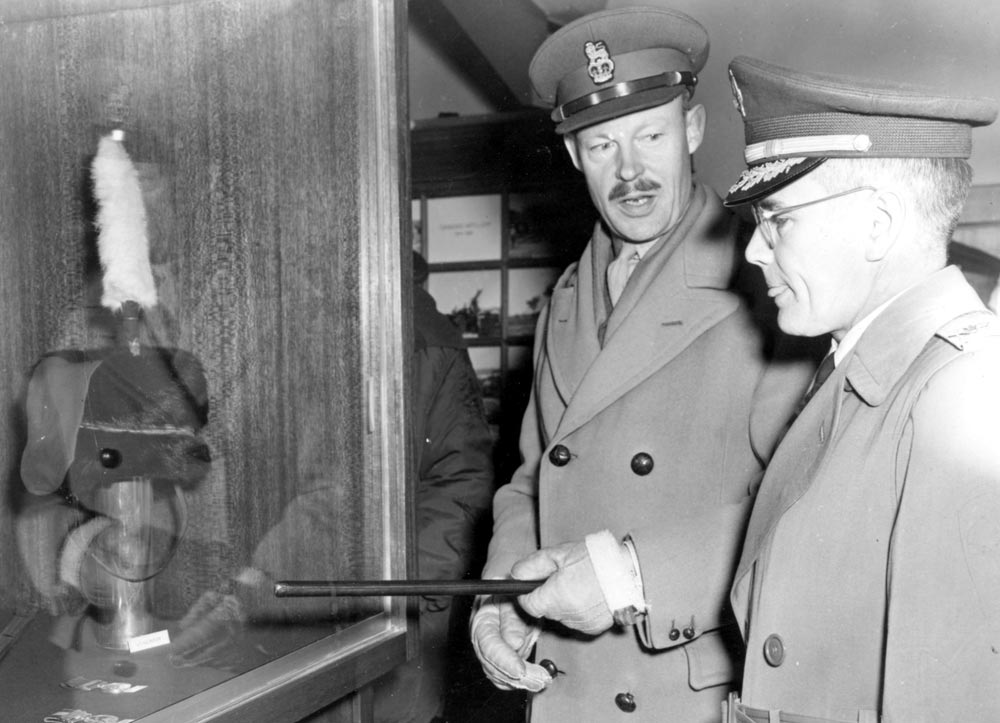
Andrew Oakden
Stag Special
The origins of the RCA Museum started well before its official opening in 1962.
After the Second World War, senior officers in the Canadian Artillery wanted a centralized museum to honour the service of the more than 200,000 Canadian Gunners who had served in peace and war since 1855. However, it took roughly two decades to acquire the necessary approval to establish a Regimental Artillery Museum at Camp Shilo, Manitoba.
Since the 1940s, Camp Shilo was primarily a training Base, headquarters for the RCA, and home of the Royal Canadian School of Artillery (RCSA). In the 1950s, Shilo had 3,000 permanent residents, including military personnel and their families. In addition, the RCSA, local messes, and Base headquarters had already collected thousands of artifacts.
In our museum archives I discovered, the first reference to the proposed “RCA Museum” or “Gunner Museum” came in a letter from the Royal Canadian Artillery director Col G.P. Marriott, addressed to the Royal Canadian School of Artillery Commandant Col H.E. Brown, dated Feb. 10, 1954.
Col Marriott stated the Vice Chief of the General Staff in Ottawa was “pressing for the development of a Gunner Museum at Shilo” and requested saving one of each piece of equipment for this purpose.
In a letter dated Dec. 23, 1954, Col A.J.B. Bailey, the director of artillery at Army headquarters in Ottawa, wrote Col H.E. Brown stating that at the end of the Second World War, the Royal Regiment of Canadian Artillery established a significant memorial fund for Gunners which gave their lives during the Second World War. Col Bailey recommended using a portion of those funds annually to establish an “RCA Memorial Museum.”
RCSA Commandant Col Brown responded to the letter on Jan. 10, 1955, stating he was in complete agreement, mentioning he spent “considerable time … trying to get the museum into operation.”
He established a museum committee consisting of himself, Maj Hoover, Maj Balfour and Maj Roscoe and recommended using the RCA Memorial Fund for the project.
In June 1956, Col Brown requested allocation through Shilo Base Command of Building L1, the old RCA Officers’ Mess, as a suitable location for a new centralized artillery museum. The Commander of Shilo Garrison Col J.M. Houghton approved the request, but delayed any potential development of the RCA Museum until establishing a new mess.
In 1961, Base Command changed and recommended a smaller building, a Second World War Roman Catholic Chapel, Building HP 18, as the first location for the RCA Museum. The first building was small, with approximately 1,000 square feet of display space.
The original staff of five were all military personnel. The first curator of the RCA Museum was Maj M.S.M. Ferguson, who kept a detailed record of the events. Maj Ferguson wrote Capt J.I. Moldaver, Directorate of Manning, Army headquarters in Ottawa and provided an update dated July 17, 1961.
He mentioned developing a “Regimental Museum” in the old “RC Chapel on Engineer Road” and sorting and cataloguing artifacts for eventual display. He said the chapel was “much too small,” yet they had a location to start building museum displays. They began by presenting fuzes, projectiles, and cartridges and arranged them chronologically.
The first RCA Memorial Fund contribution was $300 for the 1961 calendar year. On May 11, 1961, Maj Ferguson asked for additional funding of $5,000 to cover the first five years of operation. On July 10, 1961, the RCA NPP Central Fund, approved by Col E.M.D. Leslie, Commandant of the RCSA and president of the Central Fund Committee, contributed $2,000 towards developing the RCA Museum, including $1,500 for display cases and $500 for miscellaneous items, with all funds coming from the original Second World War Memorial Fund.
Col E.G. Brooks, director of artillery, in a letter to curator Maj Ferguson, dated Aug. 2, 1961, confirmed “the senior serving Gunner and D Arty agreed to a proposed organization for the RCA Museum.” The original intent of the museum was to display the history of the RCA and the military history of Canada.
In 1961, in a general letter, Col E.G. Brooks stated, “As a Regimental institution, the principal function of the museum will be to provide a tangible record of the development and achievements of the Royal Regiment of Canadian Artillery. However, it is not intended to limit the range of interest, and we propose to cover all aspects of military history.”
Many of the original documents stress the importance of embracing “all aspects of military history” while emphasizing the history of the RCA. We, as a museum, have adopted that commitment.
In a letter dated July 20, 1961, from Col E.G. Brooks, director of artillery, to Col E.M.D. Leslie, the Commandant RCSA, mentioned headquarters files “show no record of authority for the establishment of the RCA Museum at Shilo.”
Maj Ferguson responded to the letter on July 28, 1961 and confirmed they “could not locate an authority for the Museum in the RCSA files” and mentioned actioning this item up the chain of command. In a request to Army headquarters in Ottawa, dated Sept. 8, 1961, Col Leslie asked for approval to continue operations of the “RCA Museum,” with Maj Ferguson as the curator.
On Jan. 26, 1962, the Colonel Commandant of the Royal Regiment of Canadian Artillery, Brig P.A.S. Todd, officially opened the museum to the public, but not without debate and controversy over the title of the museum.
On Jan. 11, 1962, Army headquarters in Ottawa approved the establishment of “The Central Museum of the Royal Regiment of Canadian Artillery,” abbreviated to “RCA Museum.” However, in the original constitution documents from 1962, the official title was “Royal Canadian Artillery Museum,” with the abbreviated name “RCA Museum.”
In 1962, only some officers agreed on the museum’s full title. During the 1980s and 1990s, the museum had signage listing the full name as “The Royal Regiment of Canadian Artillery Museum” and the abbreviated “RCA Museum.” In the early 2000s, staff added: “Canada’s National Artillery Museum.” The short title “RCA Museum” has never changed during the past 80 years.
Initially, senior officers planned to move the RCA Museum to a more significant urban centre, like Kingston, Ont. In 1964, the curator at the museum Capt F.R. McCall wrote in an annual report, “The museum should be located in Shilo until the work of collection and restoration of historical items is nearly complete. This should take five to 10 years. Kingston has been suggested as a suitable location.”
The first location, the Second World War Roman Catholic Chapel, Building HP 18, hosted the RCA Museum from 1961 to 1964. In 1964, staff moved the collection to Building C2, a small Second World War H-Hut, which provided more room for growth with approximately 2,000 square feet of display space.
The RCA Museum stayed at Building C2 from 1964 to 1980 before moving to a larger building, the old Officers’ Mess, Building C1. This space was 9,500 square feet, with half for exhibit display.
During the 1980s, the RCA Museum expanded and acquired new collections, such as the Gregg Collection, containing 40 Second World War vehicles and guns. In the late 1990s, Base safety condemned the RCA Museum, Building C1, due to old age and water damage, which justified a more prominent location on the Base. By 2000, the RCA Museum had 30,000 artifacts, including an extensive collection of artillery and Second World War vehicles.
RCA Regimental headquarters managed the museum until 2001, then transferred oversight to civilian personnel, with a museum director in charge, in line with Canadian Forces museum policy. They also added a volunteer board of directors responsible for good governance and general oversight.
In 2001, Base Command approved renovating the old 1RCHA Gun Park, Building N118, which included 18,000 square feet of display area and 5,500 square feet of storage. Museum staff acquired non-heated storage sheds at the former GATES target shop complex, and the fourth version of the RCA Museum opened in 2004. Base Command approved a sizeable, heated warehouse, Building M101, to store guns, vehicles and artifacts beginning in 2009.
The RCA Museum did not just start in 1962. Instead, since the end of the Second World War, senior leadership within the RCA pushed hard to establish a centralized Regimental Museum in Shilo. Officers from the RCSA collected thousands of artifacts, acquired the necessary approval, funding, and staffing, and opened the first RCA Museum in 1962.
Since then, museum personnel moved the museum three times and built one of the largest collections of Canadian military artifacts, including the most extensive collection of artillery systems and Second World War vehicles in Canada. The RCA Museum continues to develop, displaying Canada’s military history and telling the ubiquitous story of the Canadian Gunner.
Outside and inside the RCA Museum in 1965.
Col G.P. Marriott (left) views a museum display.
Brig P.A.S. Todd, Colonel Commandant, opened the RCA Museum on Jan. 26, 1962.
The RCA Museum from views in 1993 and 2023.
Col Brooks, Col Brown, Col Leslie, Maj Ferguson
